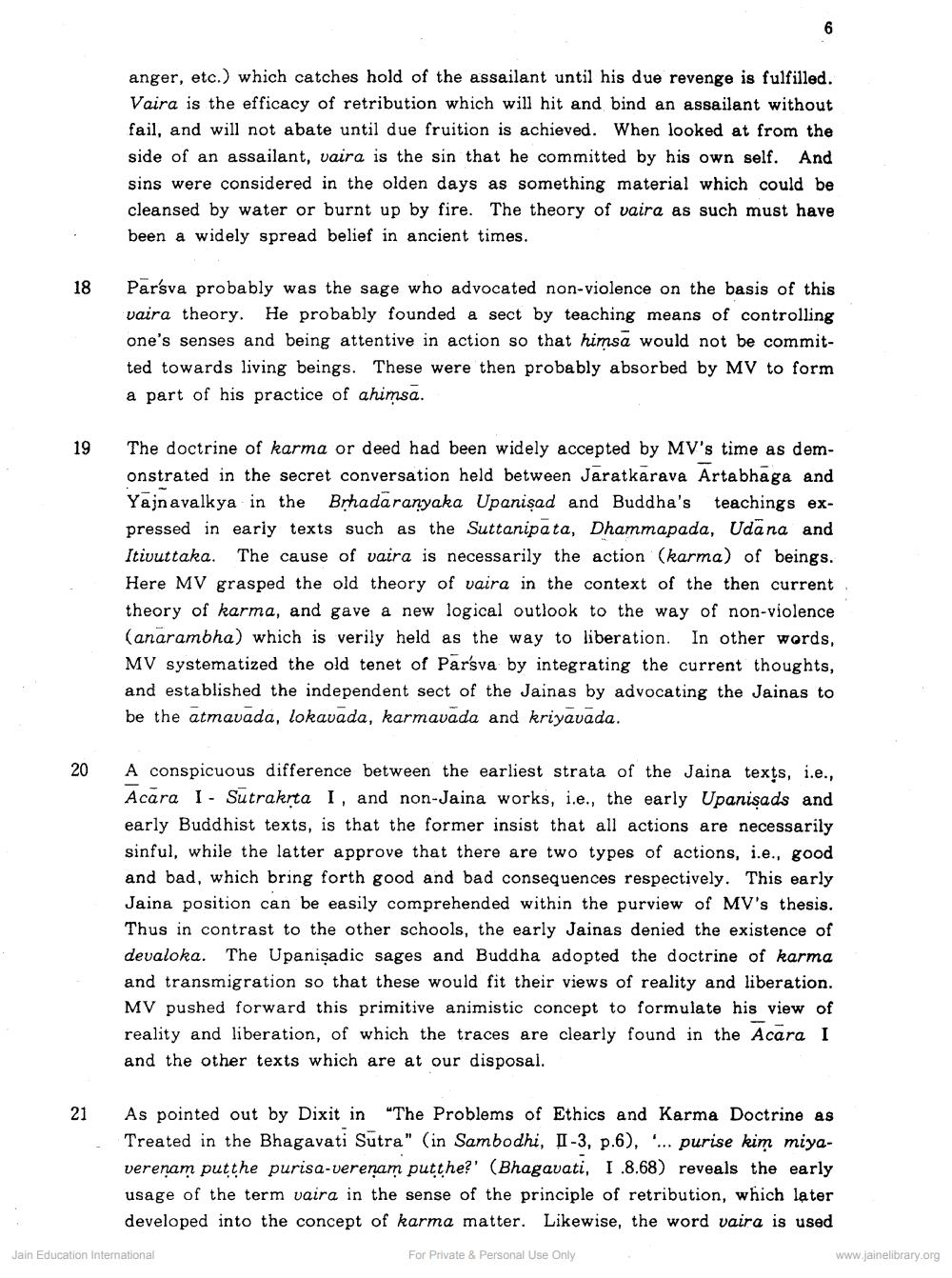________________
anger, etc.) which catches hold of the assailant until his due revenge is fulfilled. Vaira is the efficacy of retribution which will hit and bind an assailant without fail, and will not abate until due fruition is achieved. When looked at from the side of an assailant, vaira is the sin that he committed by his own self. And sins were considered in the olden days as something material which could be cleansed by water or burnt up by fire. The theory of vaira as such must have been a widely spread belief in ancient times.
Parsva probably was the sage who advocated non-violence on the basis of this vaira theory. He probably founded a sect by teaching means of controlling one's senses and being attentive in action so that himsa would not be committed towards living beings. These were then probably absorbed by MV to form a part of his practice of ahimsa.
The doctrine of karma or deed had been widely accepted by MV's time as demonstrated in the secret conversation held between Jaratkārava Artabhaga and Yajnavalkya in the Brhadaranyaka Upanişad and Buddha's teachings expressed in early texts such as the Suttanipata, Dhammapada, Udana and Itiuuttaka. The cause of vaira is necessarily the action (karma) of beings. Here MV grasped the old theory of vaira in the context of the then current theory of karma, and gave a new logical outlook to the way of non-violence (anarambha) which is verily held as the way to liberation. In other words, MV systematized the old tenet of Parsva by integrating the current thoughts, and established the independent sect of the Jainas by advocating the Jainas to be the atmavada, lokavada, karmavada and kriyavada.
A conspicuous difference between the earliest strata of the Jaina texts, i.e., Acara I - Sutrakrta I, and non-Jaina works, i.e., the early Upanişads and early Buddhist texts, is that the former insist that all actions are necessarily sinful, while the latter approve that there are two types of actions, i.e., good and bad, which bring forth good and bad consequences respectively. This early Jaina position can be easily comprehended within the purview of MV's thesis. Thus in contrast to the other schools, the early Jainas denied the existence of devaloka. The Upanisadic sages and Buddha adopted the doctrine of karma and transmigration so that these would fit their views of reality and liberation. MV pushed forward this primitive animistic concept to formulate his view of reality and liberation, of which the traces are clearly found in the Acara I and the other texts which are at our disposal.
21
As pointed out by Dixit in "The Problems of Ethics and Karma Doctrine as Treated in the Bhagavati Sutra" (in Sambodhi, I-3, p.6), ... purise kim miyaverenam putthe purisa-verenam putthe?' (Bhagavati, 1.8.68) reveals the early usage of the term vaira in the sense of the principle of retribution, which later developed into the concept of karma matter. Likewise, the word vaira is used
Jain Education International
For Private & Personal Use Only
www.jainelibrary.org




